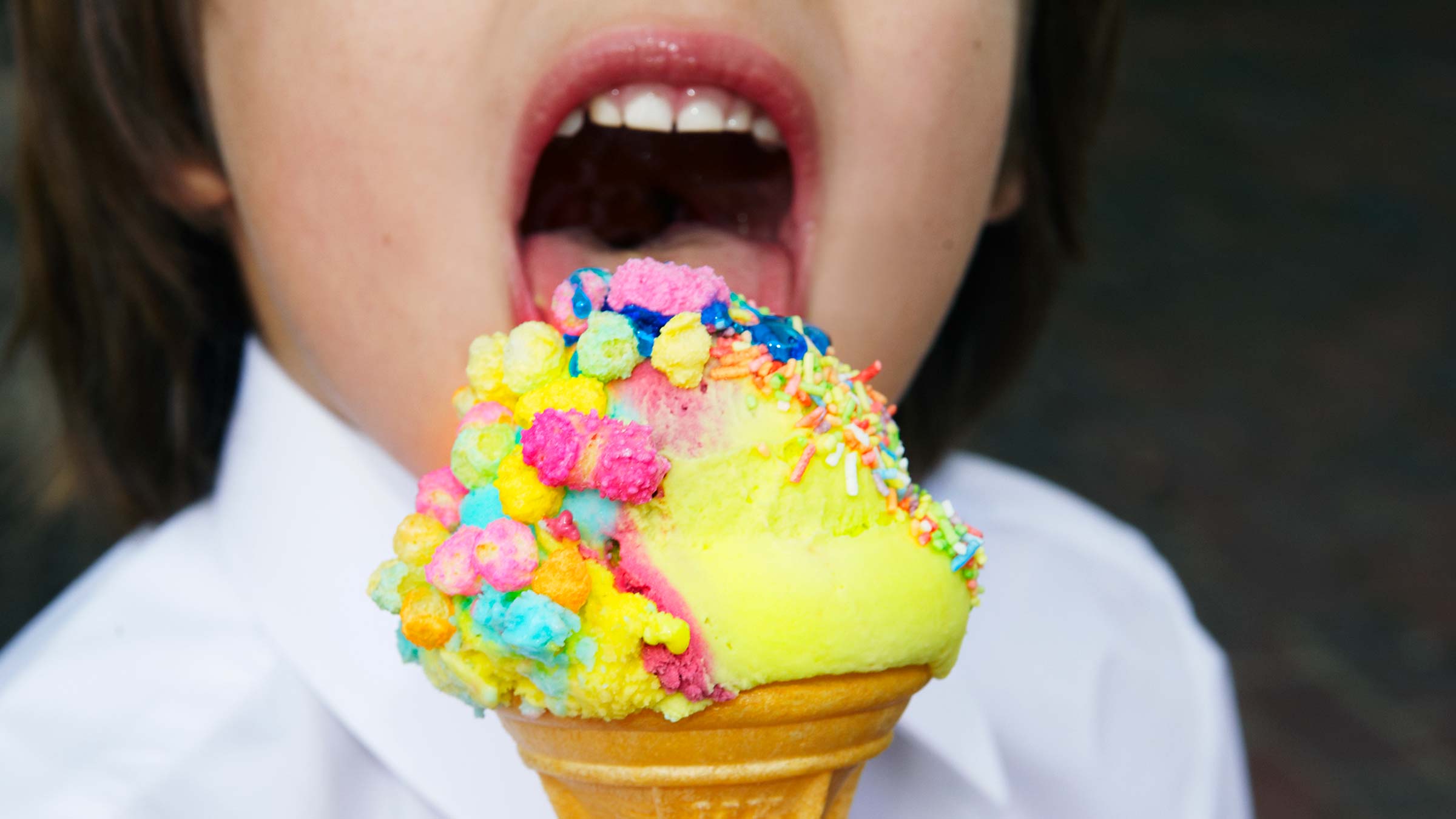
You might have wondered why your son or daughter became hyper and irritable after having a blue sports drink or eating a colorfully iced cookie or piece of cake.
The sugar in both the frosting and the sports drink could be part of the problem. The dye may be another culprit. Food dyes can make some children and teens hyperactive and moody or irritable, according to available research.
And if they regularly eat food with dye, high-strung and anxious might become their norm.
Though food dyes don’t cause disorders such as anxiety or attention-deficit/hyperactivity disorder (ADHD), they could make those conditions worse.
Food dyes and some other additives are a public health concern. Even children and young adults without a mental health condition could become agitated after having food dye.
An artificial rainbow
The average person in the United States drinks and eats five times as much food dye today compared to what was consumed in 1955. In cereals, frostings, candy and even some packaged salmon, we eat food dyes. And we drink them in some soft drinks and sports drinks.
Researchers have linked food dyes to three genes. One of those genes produces dopamine, the feel-good brain chemical that promotes focus and control over your impulses. The two other genes produce histamine, a chemical made in your body that causes you to feel alert. But too much histamine can bring on allergy symptoms.
Regulations on food dyes are less strict in the United States than in some other countries. Some food dyes are banned in the United Kingdom. Any food products sold in Europe that contain dye have to include a warning label. In the United States, manufacturers only have to include the dye in the list of ingredients.
It’s a good idea to start skimming those long ingredient lists for Red 40, Blue 1, Yellow 5, Yellow 6 and other dyes. You’d be surprised by how many products have them.
Is it certain that food dyes can cause hyperactivity and behavior problems in some children?
Not everything has been completely proven yet. Enough research has been done to make people take precautions.
If you see smoke, you should investigate whether there’s a fire, and in the meantime, you should evacuate the children, just to be safe.
What are some food dyes made from?
Some were originally made from coal tar. Now many food dyes are made from chemicals that come from petroleum. Some foods contain a concentrated form of the natural colors found in plants such as beets, paprika or blackberries. It’s not established whether those natural colors also have harmful effects when they’re concentrated and added to food. But the amount naturally found in beets or berries is believed to be harmless.
Which food dyes should you avoid eating?
It’s best to avoid all artificial food dyes. They offer no nutrition. Food dyes don’t preserve food or prevent it from spoiling. They also don’t make it more nutritious. Bright colors in foods only make the foods — most often desserts or junk food — more attractive.
Who tends to be most sensitive to the ingredients in food dyes?
Younger children seem to be more susceptible than adults. The children and teens most likely to react to food dyes include those with the following diagnoses:
- ADHD — Food dyes can make ADHD symptoms worse.
- Oppositional defiant disorder — Children who have a pattern of being angry, irritable and defying parents and other people in authority can experience more of those behaviors after having food or drinks with artificial dyes.
- Anxiety — Bacteria in your gut can affect your mood and anxiety, and food dyes could affect how bacteria in the gut function, making anxiety worse.
What else besides food dyes could affect children’s behavior?
What your child eats can affect how they act, but so can their sleep and exercise patterns. Exercise is not only good for your body, it’s good for your brain. Exercise increases the production of two chemical messengers in your body: dopamine and norepinephrine.
Stimulant medication for ADHD, such as Ritalin and Adderall, increases the amount of both dopamine and norepinephrine, which can make you more alert, focused and able to control your impulses. So, exercise can offer exactly what stimulant medications provide to people with ADHD.
Exercising in a sport is better than just exercising alone. While playing a sport, particularly a team sport, you have to think as well as use your muscles. Doing both at the same time is good for your brain.
Sleep is also critical. Sleep deprivation can mimic ADHD, making focus and mood worse. The average pre-adolescent child should get 10 to 11 hours of sleep a night. Adolescents should get at least nine hours.
Being in front of a screen too close to bedtime can hinder sleep. Screens on phones and computers give off blue light that delays the release of melatonin, the chemical that naturally occurs in our bodies and triggers someone to fall asleep. It’s a good idea for children, and even adults, to not be in front of a screen at least an hour before they plan to be asleep.
Adequate sleep, exercise and a healthy diet that’s free of artificial food dyes can take the edge off ADHD and mood symptoms and possibly enable you or your child to need less medication.

Help for mental health conditions
Ohio State offers personalized, compassionate care for your mental health concerns.
Learn more




